A Guide to the Best Hiking in Olympic National Park
You haven’t really seen wilderness until you’ve experienced the trails in Olympic National Park. In a word, the hiking here is phenomenal. In a few words, it’s quite possibly the best you can find anywhere else on the planet. From impossibly verdant rainforests to rugged and wild coastlines, to the waterfalls and glacial-fed rivers and windswept ridges, the 611 miles of trails in Olympic National Park offer up an endless array of options for hikers of all levels. Here’s what you should know about the hiking scene in one of America’s most gorgeous and diverse national parks.
The Coast
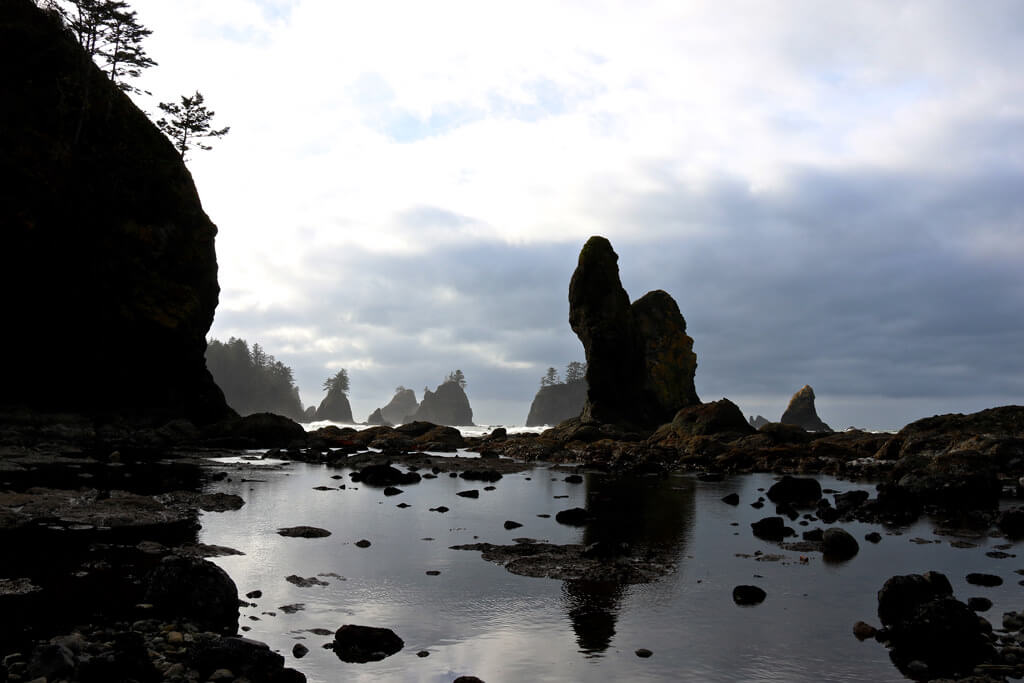

Hiking Shi Shi Beach - Douglas Scott
The Wilderness Coast of Olympic National Park is full of some of the most rugged beaches in America. Olympic has 73 undeveloped, wild, and rugged miles of beaches, all of which can be hiked, and each beach seems more amazing the farther north you go. Tide pools and gigantic mazes of driftwood dominate the shorelines, and just offshore towering sea stacks slowly crumble into the sea. Each spring, 20,000 gray whales swim near the shores, and throughout the year bald eagles circle overhead.
While there are seven main beach destinations, three of them are absolute must-sees. For those looking for easy beach access and stunning views of the Pacific, the half-mile trek to Ruby Beach is a can’t-miss classic. Even in the rain, Ruby Beach is a must-see destination. With huge waves crashing against the sea stacks, enormous pieces of driftwood getting tossed around like toothpicks, and winds blasting the bluffs, the coastal region where Ruby Beach is located is constantly voted the best place to storm watch in the state of Washington.
Second Beach, at LaPush, is also a classic, as it shows off rugged sea stacks slowly eroding from centuries of storms. The highlight for many is the ridge diving into the ocean to the north, dotted with a few trees clinging to life against the power of the Pacific. Over time, the crashing waves found a weakness in the ridge, slowly chipping away until it created a bus-sized hole right near the crashing waves. Right before your eyes, you are watching a sea stack form, seeing the past, present, and future all timelessly converging at once.
However, the ultimate coastal destination is the rugged and remote Shi Shi Beach and Point of the Arches. This hike, best done during low tide, gives off the most stunning views of sea stacks anywhere in America and is home to sunsets that will forever be etched into your brain.
The Rainforests
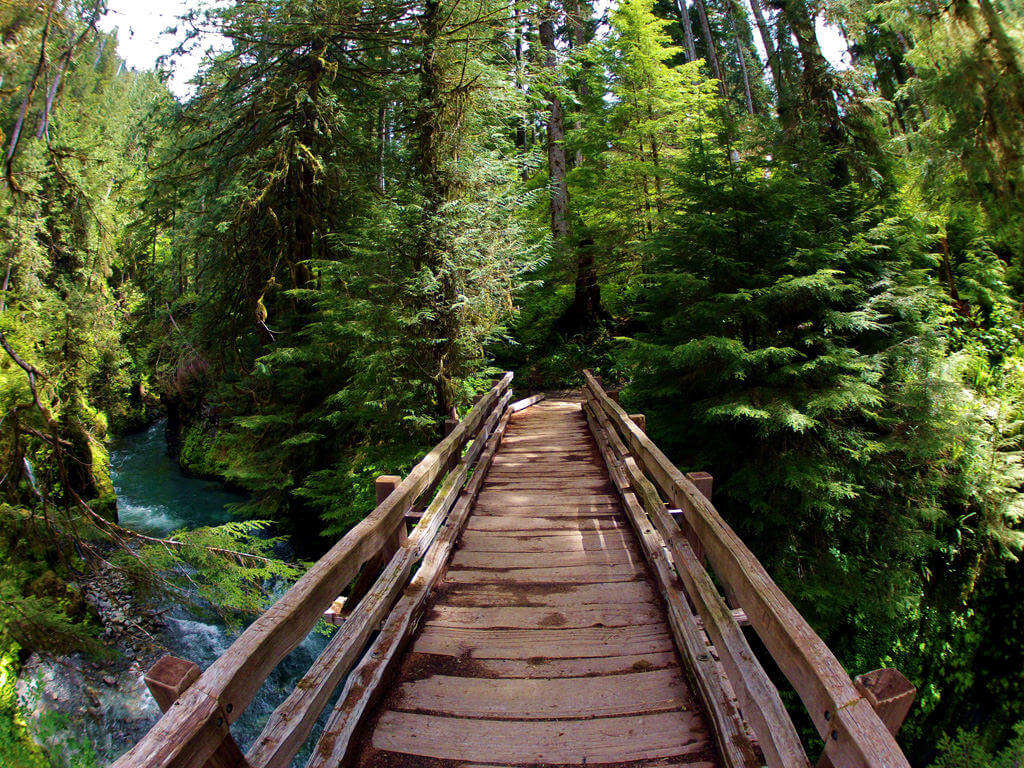

Pony Bridge in the Quinault Rainforest - Douglas Scott
Once you have seen the coast, it is time to explore the lush and dramatic rainforests that rest on the western flanks of the Olympic Mountains. Receiving more than 14 feet of rain each year, the rainforests of Olympic are wet, verdant, and full of huge trees, lush moss, endless ferns, and herds of elk.
One of the most famous hiking destinations in the Olympics is the Hoh Rainforest, and two of its signature trails are the Hall of Mosses and Spruce Nature Trail, which can be hiked as a loop and combined for an easy 2-mile stroll. For those looking for more solitude and a true wilderness adventure, take a stroll as far as you can along the 18-mile, one-way Hoh River Trail, which leads all the way to Mount Olympus.
While the Hoh is a great introduction to the rainforest, the Quinault Rainforest is home to more diverse hiking trails and remote destinations. With stunning hikes like the 5-mile round trip hike to Pony Bridge, and jaw-dropping panoramas from the summit of Colonel Bob Peak located above the rainforest, endless wilderness beauty awaits hikers of all levels. Numerous rainforest hikes, with frequent elk sightings can be found just outside the park in Olympic National Forest, as well as plenty of roadside waterfalls and gigantic, record-breaking trees. The rainforest hikes of Olympic are staggeringly gorgeous, and quite simply must be experienced firsthand.
The Mountains
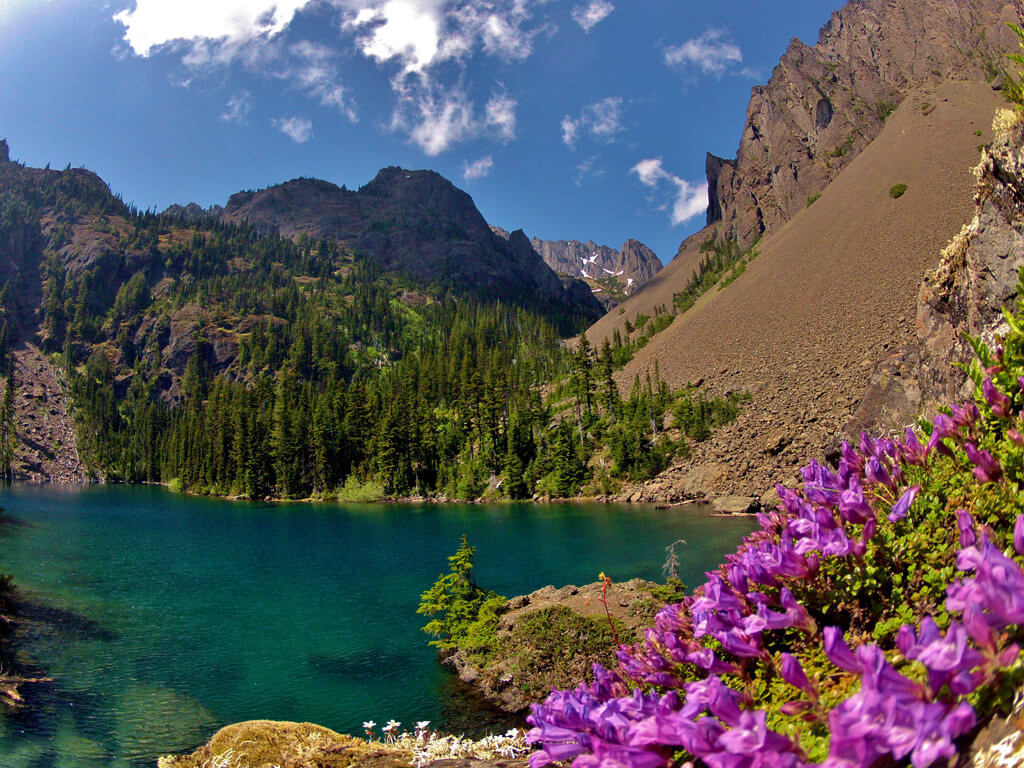

Lake Constance in the summer - Douglas Scott
On the eastern slopes of the Olympic Mountains, above the Hood Canal, the steepest and most rewarding hikes are awaiting serious hikers in search of adventure.
The main entrance to this region is Staircase, which has a fantastic family-friendly hike called the Staircase Loop Trail. Weaving through the wilderness, the trail crosses the wild North Fork of the Skokomish River before heading back toward the ranger station. The Staircase Region also has numerous mountains to climb, including the always-popular and panoramic wonderland of Mount Ellinor. However, if you are looking for a true hiking adventure, take the 22-mile out and back hike to the breathtaking views at Gladys Divide; it’s sensational.
Farther up Hood Canal, those looking for an incredibly steep, yet rewarding hike will not be disappointed with the 10 mile out and back trail to Lake Constance. Ridiculously steep for the final two miles, this trail gets you to a shimmering, remote lake with giant mountains looming in the distance. Also in this region is the path to Upper Royal Basin, which leads hikers along America’s second steepest river before following a small creek, past a gorgeous lake, and ending at the lunar-like, glaciated base of Mount Deception, the second tallest mountain in the Olympic Range.
The Northern Regions
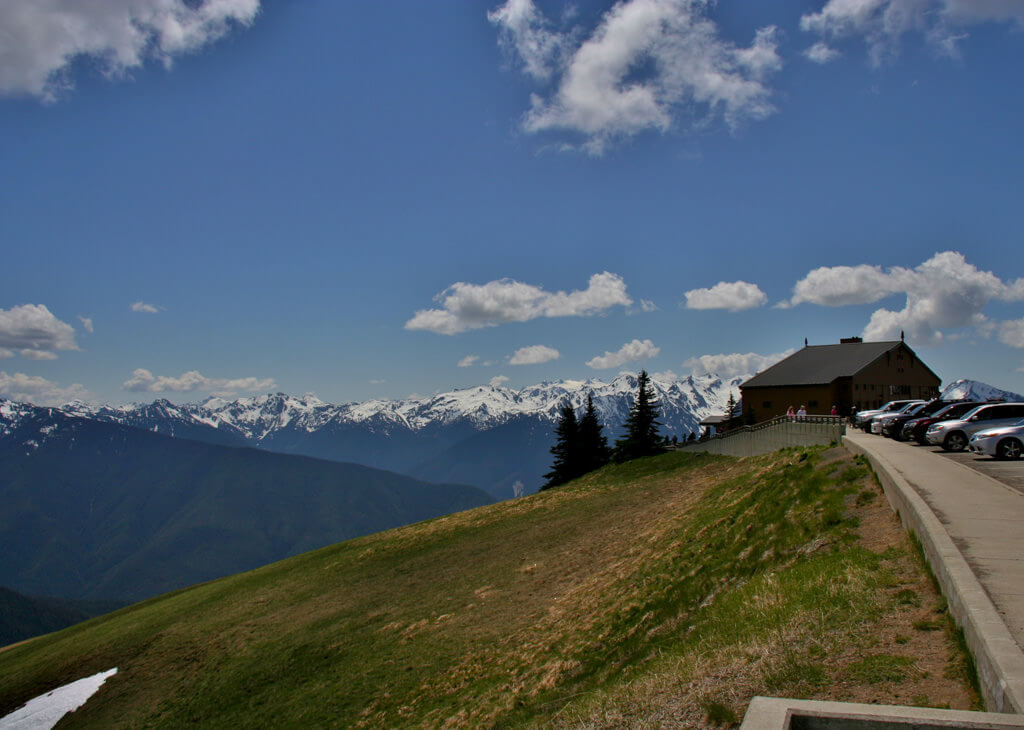

Hurricane Ridge - Douglas Scott
Finally, no hiking trip to Olympic National Park can be complete without exploring the northern reaches of the park. Considered by many to be home to the most beautiful hiking destinations in Olympic, Hurricane Ridge is just a mile outside the small town of Port Angeles. The best hike to take is the three-mile round trip trek to Hurricane Hill. Giving panoramic views of the Olympic Mountains, the Strait of Juan de Fuca, and British Columbia, Canada, this is the iconic family-friendly hike at Hurricane Ridge.
Along Lake Crescent—Washington State’s second deepest lake—no trip to the area is complete without a hike to Devils Punchbowl, Marymere Falls, and the top of Mount Storm King. These three hikes are quintessential to getting a feel for the Lake Crescent region. Farther west from Lake Crescent, the Elwha Region of Olympic National Park gets you up close and personal with views of a majestic river, with highlights including the dramatic view of Goblin’s Gate—a very narrow, picturesque gorge.
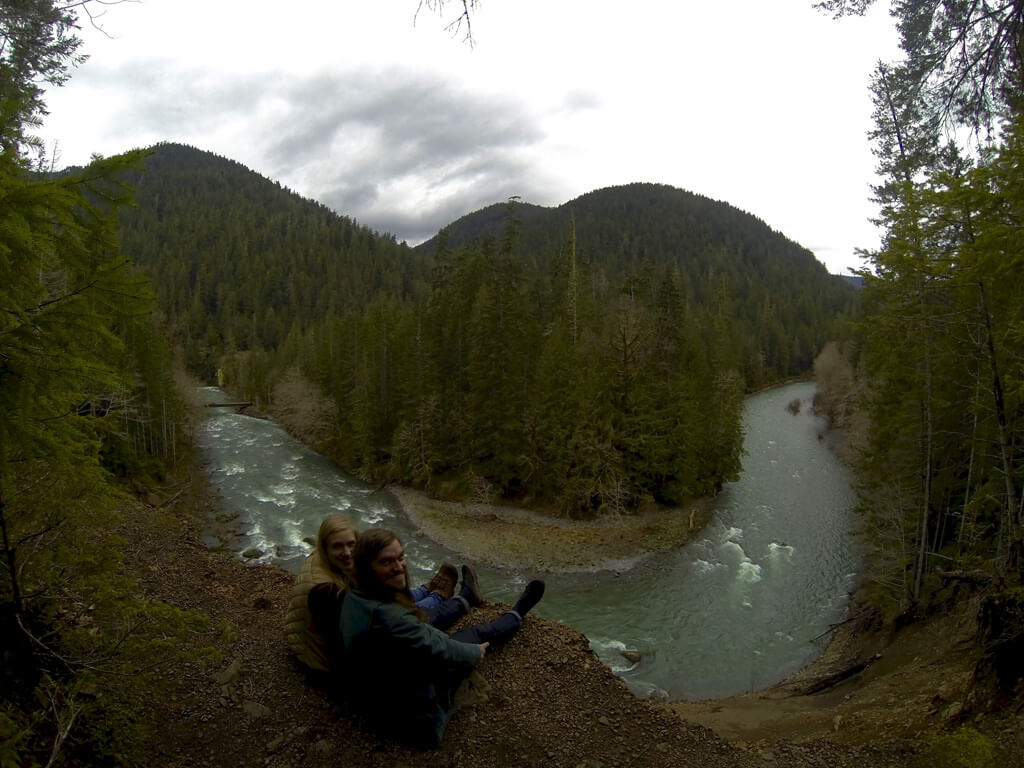

Finally, along the northern edge of Olympic National Park, the timeless beauty of Sol Duc Falls and the Sol Duc River should never be underestimated. This short, two-mile trail is family-friendly, ending at one of the most iconic waterfalls on the West Coast.
